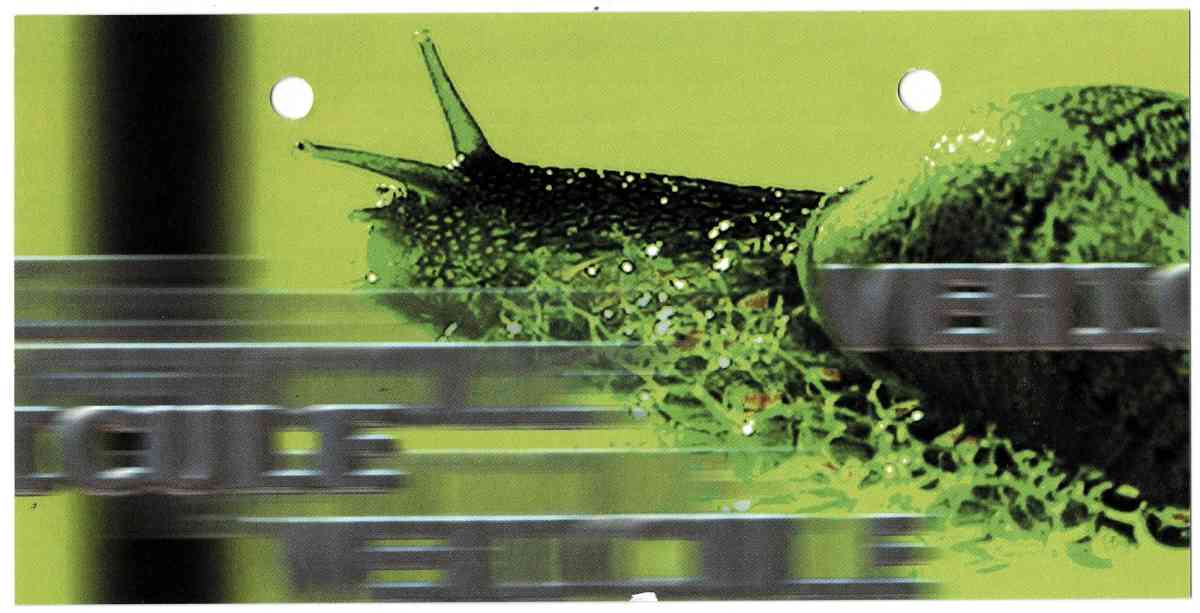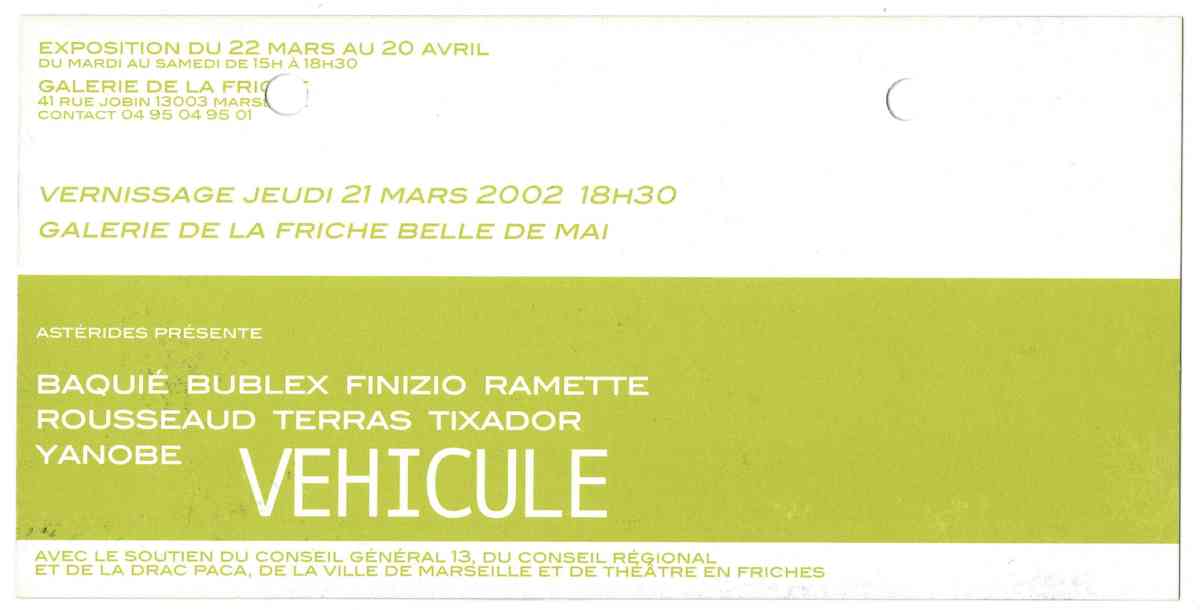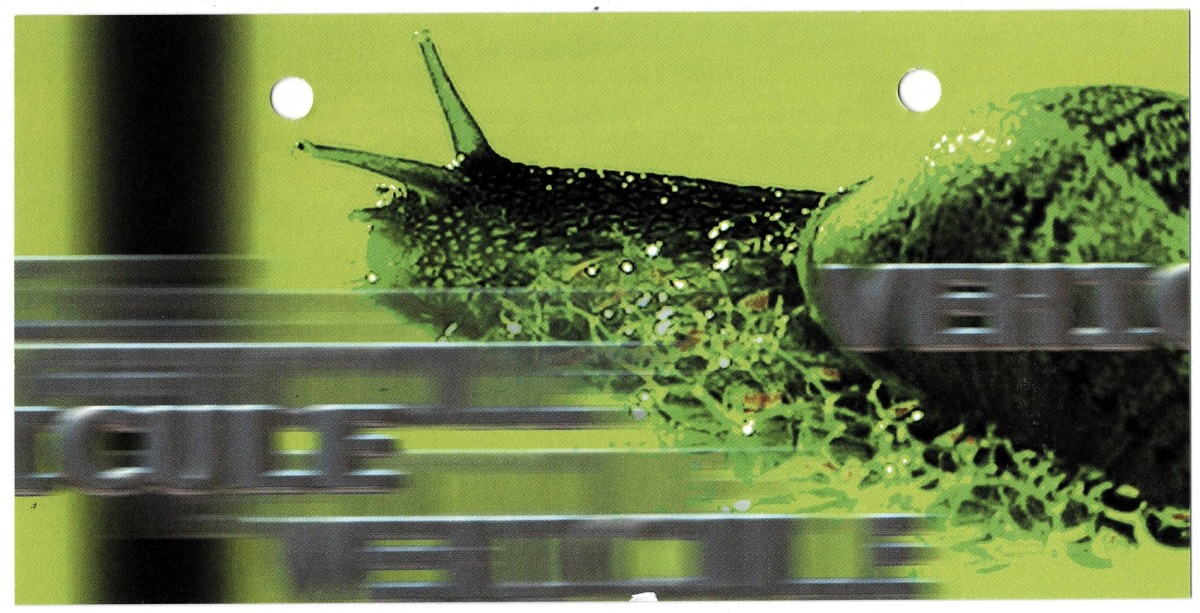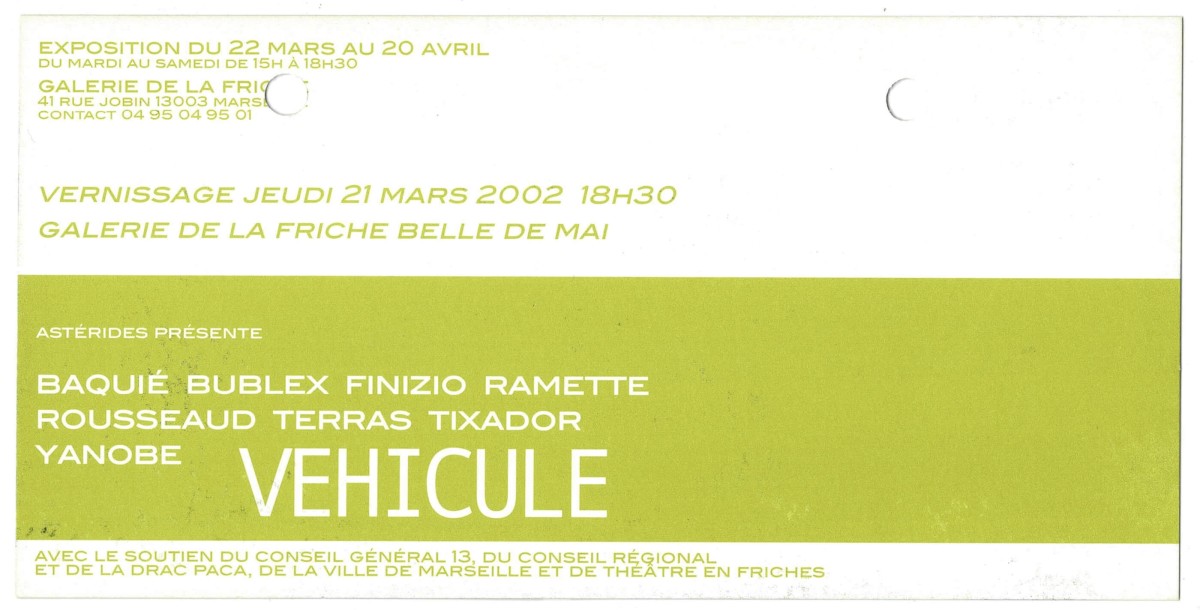Véhicule
Collective show with Richard Baquié, Alain Bublex, Francesco Finizio, Philippe Ramette, Bruno Rousseaud, Laurent Terras, Laurent Tixador and Kenji Yanobe
Curation: Lydia Scappini
March 22 - April 20, 2002
Galerie de la Friche, Friche la Belle de Mai, 13003 Marseille
VEHICLE: that which serves to transmit, to carry from one place to another, to convey or communicate.
With this exhibition, ASTÉRIDES brings together eight artists who explore the idea of physical, mental, or virtual movement. Commonly associated with the term “vehicle,” the automobile is the primary object referenced in transportation. Revealing the technological developments linked to movement, the car—as a medium in its own right—has been widely explored by artists. While the aim is not to present an exhaustive overview of these practices, the exhibition allows for a diverse and transversal reading of the theme.
The works of Richard BAQUIÉ and Alain BUBLEX reveal, through their respective vehicles, various transfers between physical and intellectual movements.
In Que reste-t-il de ce que l’on a pensé et non dit?, Richard BAQUIÉ simulates the evanescence of thought. The car is evoked as a vehicle of reverie, while movement is merely suggested by the subtle trembling of a piece of paper.
This correlation between movement and thought also appears in the work of Alain BUBLEX:
“Driving is an exceptional event, an unproductive activity of absence, like watching television or playing video games, but one that leaves the mind perfectly free. This freedom lies at the heart of driving, it seems to me that we don’t drive to get somewhere but to think.” (1)
The automobile appears—more or less explicitly—in nearly all of Alain BUBLEX’s projects, and the Aérofiat, a humorous evocation of a hybrid vehicle, concurrently develops a spatio-temporal projection (“the future in the past”) (2).
A thinking machine, a machine for travel, the Aérofiat represents “the modern world in a state of becoming.” (3)
The hybrid models of Bruno ROUSSEAUD highlight the overprotection found in our societies. These machines are militarized, and their aggressive appearance is accentuated by the addition of a tank turret. As plastic variations of a full-scale prototype, the vehicle is presented here purely as object.
The evocation of war is also perceptible in Foot Soldier (Godzilla) by Kenji YANOBE. A fantastical transcription of a creature born from the nuclear explosions of 1945, this piece reflects the artist’s cultural universe. Questioning technological feats and their uses, this grotesque, monstrous construction is nonetheless designed to accommodate a human body and consider its mobility.
The installation by Francesco FINIZIO (model, a series of gouaches, and various documents related to Lenin’s mummy) allows for “an exploration of the visual vocabulary of utopia.” (4) Designed according to the logic of a consumer product, the Panacea device leverages the geographic displacement of an iconic symbol in order to construct an economic alternative.
An auxiliary vessel attached to an unidentified principal organ, Laurent TERRAS’s Space Nurse Project: survival module functions both as a communication booth and a small survival craft. The movement of this capsule resembles that of a disoriented compass. Its mental displacement evokes the proliferation of external flows in contrast to the extremity of identity withdrawal.
A mobile object carrying a world of imagination, the radio-controlled iceberg by Laurent TIXADOR is the first scale model designed for polar navigation. This construction supports a planned expedition to Greenland, during which the artist hopes to join fellow adventurers.
Elements of a potential physical projection and supports of an equally potential mental movement, Philippe RAMETTE’s Starting block à chute would inevitably cause the fall of any user attempting such a competition. A deceptive exercise in physicality and an object of rivalry, this ambiguous piece reflects the artist’s signature subtlety and discreet humor.
(1) Jean-Yves JOUANNAIS, “Tenir à jour les paysages”, ArtPress, March 1999, p.25.
(2) Alain BUBLEX, “Un entretien avec Christine Macel, Paris, 19 août 1996” in Aérofiat, Saint-Fons, Centre d’arts plastiques de Saint-Fons ed., 1997.
(3) Alain BUBLEX, “Un entretien avec Christine Macel, Paris, 19 août 1996” in Aérofiat, op.cit.
(4) Francesco FINIZIO, excerpt from the notice of the piece created for the Communal Fund of the City of Marseille.



